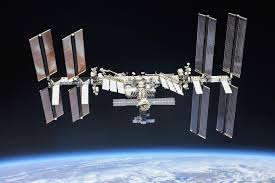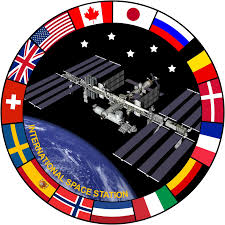To Infinity and Beyond!
- Dr. Orna Kretchmer

- Jul 16, 2024
- 4 min read
Celebrating 55 years to the Apollo 11 mission launch
By Dr. Clare Hancock
The success of NASA’s Apollo 11 mission to the Moon, launched on July 16 th , 1969, remains
one of mankind’s most ambitious and awe-inspiring feats.
Neil Armstrong and Buzz Aldrin’s pivotal first steps onto the lunar surface were the result of
decades of innovation and competition. Following the success of the USSR’s Sputnik 1 satellite in 1957, President Eisenhower established NASA (the National Aeronautic and Space Administration) to step up the US’s efforts to lay claim to the title of global leaders in space exploration. The pathway to this status was set out clearly by President Kennedy in May 1961:
“…I believe that this nation should commit itself to achieving the goal, before this decade
is out, of landing a man on the moon and returning him safely to the earth. No single
space project in this period will be more impressive to mankind, or more important for
the long-range exploration of space…”.
Left to right: Neil A. Armstrong, commander; Michael Collins, command module pilot; and Edwin E. Aldrin Jr., lunar module pilot
The culmination of this goal was watched live on July 20th, 1969, by an estimated television audience of 650 million across the globe, solidifying not only the political and scientific impact of the mission but also the international cultural impacts of mankind’s “giant leap” into the future of interplanetary exploration. Fueled by this new national passion, NASA undertook many more lunar missions in the following decade, including the launch of crewed landings and orbiters.
While on the Moon’s surface, Aldrin deployed instruments to measure the distance from the Moon to the Earth, as well as to analyze the chemical composition of solar wind and the to measure the Moon’s seismic activity. Courtesy of NASA
In more recent years, however, this passion seems to have waned somewhat among the next generation of potential explorers. A 2019 study from The Harris Poll found that only 11% of 8–12-year-olds aspire to be an astronaut, nearly 3 times fewer than aspire to be an internet influencer. So, how has our approach to interplanetary discovery evolved, and what does the future hold for humans in space?
Space exploration: then vs. now
Competition vs. collaboration
Although humans undoubtedly have an innate drive to explore our world, the primary motivator behind the first successful human presence on the Moon, as outlined above, was largely political. While maintaining the primacy of the US in space will remain integral to NASA’s mission, there is a somewhat more collaborative tilt to its more recent missions.
One of the most prominent examples in the last few decades has been the establishment of the International Space Station (ISS). Continuously occupied and maintained in low Earth orbit for over 23 years, the ISS is an international collaboration between the US, Russia, Japan, Europe, and Canada. The space station has acted as a valuable research vessel to study microbiology and microgravity in ways that are not possible on Earth and could benefit human health on our home planet as well as in future space colonies.
International Space Station (ISS) Courtesy of NASA
More recently, NASA’s Artemis program – the first crewed lunar mission since 1972’s Apollo 17 – is a collaborative effort incorporating space agencies from Canada, Europe, and Japan. The landing of Artemis 3 on the Moon is planned for 2026, with the uncrewed lunar orbit of Artemis 1 a success in 2022 and a crewed lunar flyby – Artemis 2 - planned for 2025. Later stage Artemis missions will aim to establish a permanent human presence on the Moon that will act as a base from which future Mars expeditions can be supported.
Building the crew
When NASA was first established in the late 1950s, only military test pilots were able to submit applications to their programs. As such, with this pool comprising exclusively white men, little to no diversity existed in the early NASA astronaut cohorts. While this restriction was dropped to allow scientists to apply in the mid-60s, diversity remained incredibly low until the late 1970s, when the first women and non-white astronauts were admitted. Gender equity within a crew was achieved for the first time in 2019, with ethnic diversity continuing to lag.
Although slow, improvement is tangible. The Artemis program will see the first woman and person of color to travel beyond low Earth orbit. Further, evolution of a greater recognition of skills outside of jet aircraft piloting and engineering has bolstered inclusion of broader STEM graduates in space exploration and research.
Mars: a new home
Following Apollo 11’s success, several missions were undertaken to push the bounds of human exploration even further. Many missions, launched by the US and USSR, were unsuccessful in this endeavor until NASA’s Viking program launched in 1975-76. Viking 1 and 2 remained on the Martian surface for many years and were integral in advancing our understanding of the planet, sending home a vast amount of data about the planet’s composition – including evidence that Mars’ composition is almost identical to that of meteorites found on Earth, suggesting they may have originated there.
Currently, two rovers are present on Mars’ surface – Curiosity and Perseverance – gathering biological and chemical data, assessing the current conditions and planning the modifications needed to facilitate human settlement on the planet. In parallel, experiments are being conducted on Earth to test potential habitats that may be used by the first human colonizers of Mars, with the first human subjects being released earlier this month after being housed in an artificial Mars habitat for over a year.
Left - Perseverance , Right Curiousity Courtesy of NASA
The future of space exploration
As mankind advances its boundaries further and further into the solar system, it is vital that a strong and passionate workforce is built and sustained to provide innovative and creative solutions to the many challenges that will arise. Where astronauts used to be somewhat of a monolith – composed largely of military personnel – there is now a place for many different types of people and skill sets to drive human discovery in space. Interests and skills across the spectrum of STEM will be integral to building habitats and piloting spacecraft, researching human and microbial life, understanding cosmic radiation, developing sustainable fuel sources, and many other challenges that have yet to reveal themselves.




















Comments